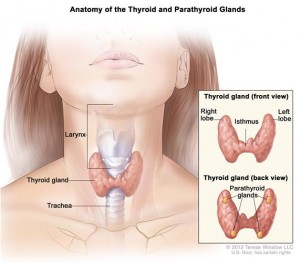
Is Surgery Necessary to Diagnose Thyroid Cancer?
-
A needle biopsy may not be enough to diagnose thyroid cancer: A needle biopsy of a suspicious area in the thyroid is an excellent initial method of identifying cancer in the thyroid gland. Cells collected using a small needle are examined under a microscope to determine whether a thyroid cancer is present. In many people, a biopsy will exclude a cancer. However some patients, the biopsy will be “indeterminate,” meaning it is not possible to determine whether the cells are cancerous based on their appearance under the microscope.

Indeterminate biopsies are an extremely common reason for people to undergo thyroid surgery. It is an unfortunate fact that most thyroid surgery is done to determine whether cancer is present rather than to treat a cancer. In medical terms, this is to say that the procedure is diagnostic rather than therapeutic. Many patients have one half (hemithyroidectomy) or even the whole gland (total thyroidectomy) removed only to find out later that there was never any risk of cancer at all.
There is great interest among researchers and physicians to develop non-invasive or minimally invasive tests to identify thyroid cancer. A good thyroidologist will sometimes be able to integrate the imaging characteristics and needle biopsy results, with or without a battery of molecular tests to make impressive predictions about whether cancer is present. The use of molecular testing is helpful.
With a careful evaluation, it may not be necessary to have surgery just to exclude the possibility of thyroid cancer.
When to be concerned about a feeling of something being stuck in the throat: Complaints such as this are surprisingly common, and were described in antiquity rather uncharitably as “globus hystericus.”
Patients may bring their complaints to their primary doctor. But the throat is not readily examined by most primary physicians, who order ultrasounds and CAT scans in a misguided attempt to find the source of the problem.
Fortunately, the vast majority patients who have these complaints don’t end up having cancer. Nevertheless, a look either with a mirror or an instrument permitting a careful inspection of the throat in the office may be warranted. An office examination by an experienced otolaryngologist or head and neck surgeon is the best initial step to evaluate for cancer.
Some things make it less likely that the sensation of a lump in the throat is cancer, for example, if the sensation has been present for less than 2 weeks or for a couple of years.
In contrast, a sensation that is always only on one side of the throat is more concerning, especially if there is also one-sided ear pain, a new visible or palpable neck lump or unintentional weight loss.
Some factors that physicians used to use to distinguish people at higher risk for throat (oropharyngeal) cancer are no longer valid. For example, globus-type complaints from older men who smoked were more likely to be taken seriously than similar complaints from young individuals who never smoked cigarettes. However, currently, the most common cause of oropharyngeal cancer is the human papilloma virus, the same virus that causes cervical cancer, not smoking. Vigilance is warranted.
Visit Fox Chase Cancer Center for more information on thyroid cancer diagnosis and treatment.
